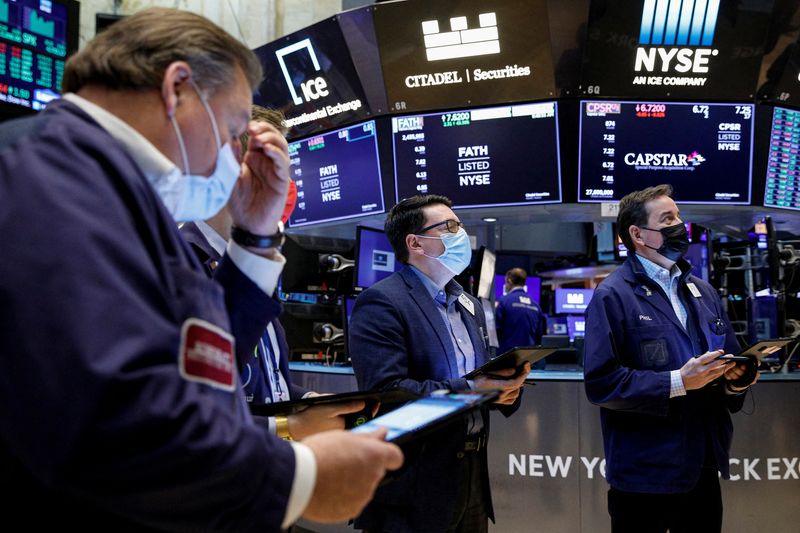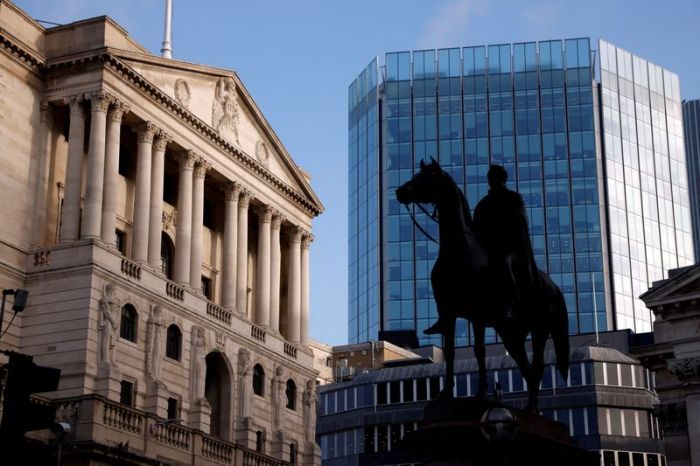(Reuters) – U.S. stock indexes rose on Wednesday after data showed that while U.S. inflation was at its highest in decades, it largely met economists’ expectations, cooling some fears that the Federal Reserve would have to pull back support even more forcibly than already expected.
Ten out of the 11 major S&P sectors finished higher after the news with the S&P 500 and the Nasdaq outperforming the Dow as growth stocks outperformed value.
Data from the Labor Department showed the consumer price index (CPI) increased 0.5% last month after rising 0.8% in November, while in the 12 months through December, the CPI surged 7.0% to its highest year-on-year rise in nearly four decades.
Economists polled by Reuters had forecast a CPI gain of 0.4% for December and 7.0% on a year-on-year basis.
“Investors were bracing for even hotter in inflation than what we actually saw. As bad as the number is and as much inflationary pressure that’s in the economy there was a little relief in that,” said Anthony Saglimbene, Ameriprise Financial’s global market strategist in Troy, Michigan.
“Today’s inflation report validates the Fed trajectory and means they don’t have to be any more aggressive than is already priced in.”
The central bank’s plan for easing accommodation to fight inflation includes raising interest rates, which analysts expect to start as soon as March, as well as tapering its bond buying program and reducing its asset holdings.
For most stock sectors it also helped that longer-dated U.S. Treasury yields dipped on Wednesday. In recent weeks, sharp gains in the U.S. 10-year yield had weighed on stocks, particularly in rate-sensitive growth sectors like technology.
“The fact that bond market yields are standing down is probably a signal for equity investors to take on a little more risk today,” said Jack Ablin, chief investment officer at Cresset Capital Management in Chicago.
But with the small cap Russell 2000 index underperforming to end down 0.82%, Ablin saw some caution.
“Equity investors still want quality. It’s not a free-for-all,” Ablin said.
The Dow Jones Industrial Average rose 38.3 points, or 0.11%, to 36,290.32, the S&P 500 gained 13.28 points, or 0.28%, to 4,726.35 and the Nasdaq Composite added 34.94 points, or 0.23%, to 15,188.39.
The S&P’s top sector gainers of the day were materials, up almost 1%, consumer discretionary, up 0.6% and technology which rose 0.4%.
Growth and technology stocks have been staging a comeback this week, with investors watching a variety of metrics to decide whether to buy the rally or brace for more declines.
Also on the watchlist for this week is the unofficial kick-off of the fourth quarter earnings season with JPMorgan Chase & Co, Citigroup Inc and Morgan Stanley due to report their results on Friday.
The Dow’s biggest drag for the day was Goldman Sachs, which fell 3% and Morgan Stanley fell 2.7% on the day as their smaller rival Jefferies fell 9% after it missed quarterly earnings expectations.
Both Goldman and Morgan Stanley, like Jefferies depend heavily on their capital markets business. Both Morgan Stanley and Goldman were also in the top five biggest drags on the S&P 500 on the day. However, the broader banking sector, which includes more traditional lenders, rose 0.3% on Wednesday.
In sectors like air travel, however, surging cases of the Omicron variant of the coronavirus could dampen earnings expectations, with analysts at Bank of America reckoning that the pandemic’s impact on corporate travel is the biggest risk to the airline industry.
The healthcare index, was weighed down by shares of drugmaker Eli Lilly, which closed down 2.4% and was the biggest single weight on the S&P, and Biogen, which lost 6.7%.
The U.S. government Medicare program said that while it plans to cover Biogen’s Aduhelm Alzheimer treatment it will require patients to be enrolled in a clinical trial, limiting access to the medication. This could also impact Eli Lilly, which is developing similar drugs.
The biggest boosts to the S&P on the day were Tesla up 3.9% ahead of Microsoft Google parent Alphabet, which both rose more than 1%.
Advancing issues outnumbered declining ones on the NYSE by a 1.26-to-1 ratio; on Nasdaq, a 1.37-to-1 ratio favored decliners.
The S&P 500 posted 38 new 52-week highs and 1 new lows; the Nasdaq Composite recorded 60 new highs and 137 new lows.
On U.S. exchanges 10.251 billion shares changed hands compared with the 10.496 billion average for the last 20 sessions.
(Reporting by Bansari Mayur Kamdar, Shreyashi Sanyal and Anisha Sircar in Bengaluru, Sinéad Carew and Matt Scuffham in New York; Editing by Maju Samuel and Aurora Ellis)























